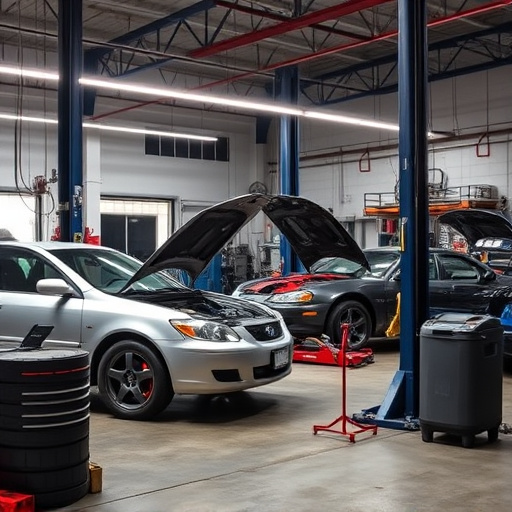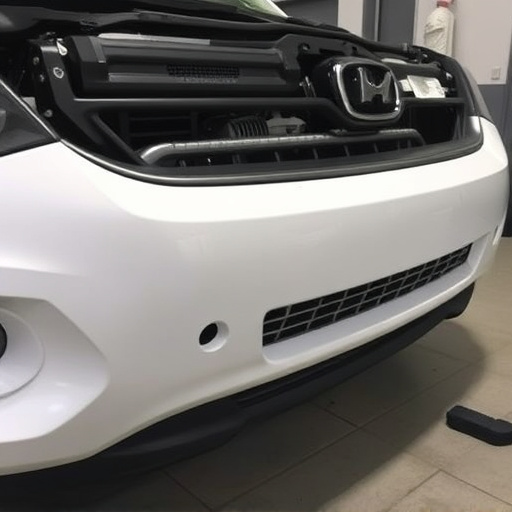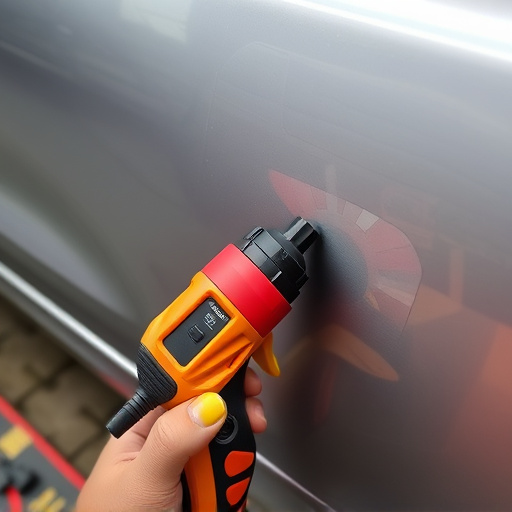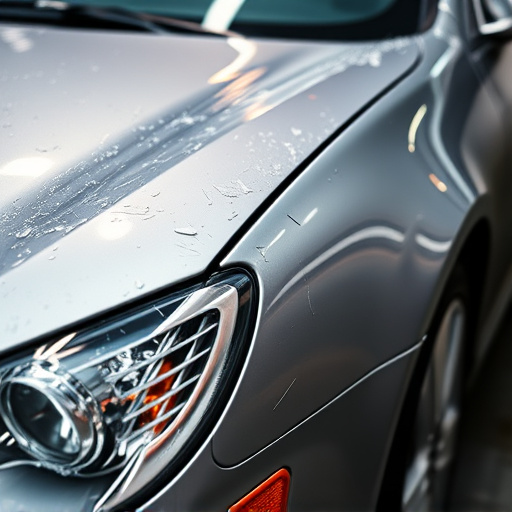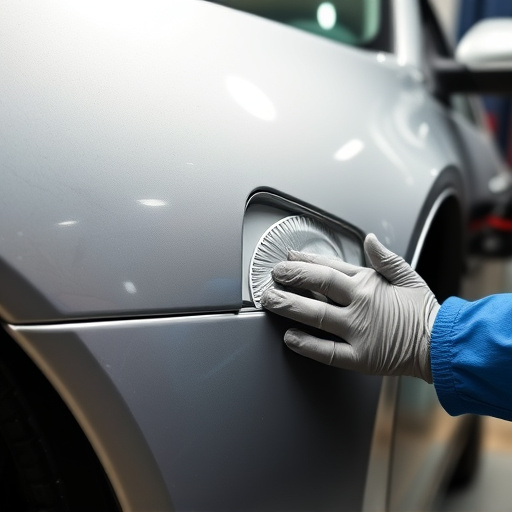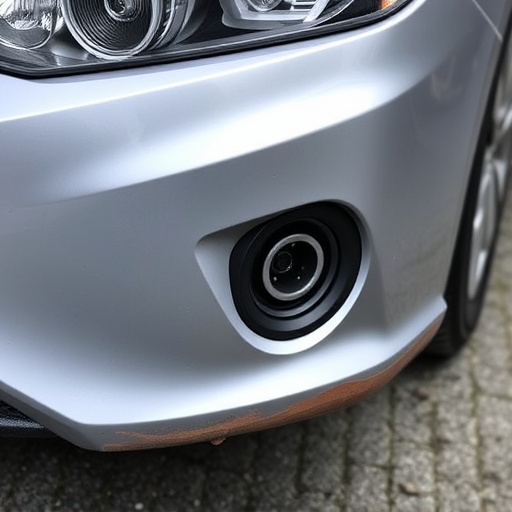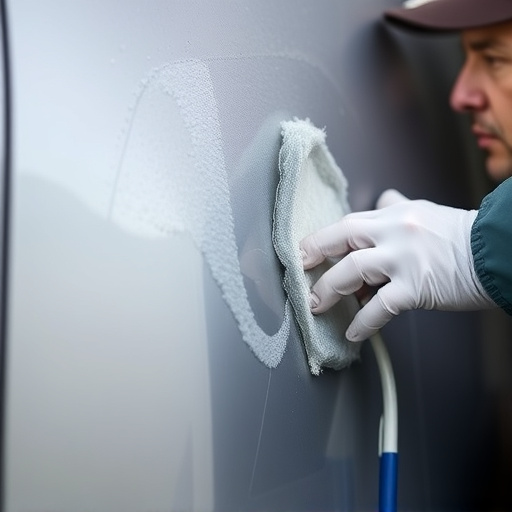Tesla black paint restoration requires careful upkeep due to environmental factors causing oxidation and fading. Restorers assess damage, using specialized tools for repair, addressing root causes with new matching coats of paint. Essential tools include polishing compounds, microfiber cloths, dual-action polisher, sanding tools, dent puller, and protective gear. Inspection, light sanding, cutting compound application, buffing, and carnauba wax or sealant protection complete the meticulous process.
Looking to restore your Tesla’s faded black paint and eliminate oxidation? This comprehensive guide is your go-to resource. We’ll walk you through understanding the causes behind common black paint issues, equipping you with the knowledge to select the right tools and materials for a successful restoration. Then, we’ll provide a detailed step-by-step process ensuring your Tesla’s black paint not only looks new but lasts longer, enhancing its aesthetic appeal and resale value.
- Understanding Tesla Black Paint Oxidation and Fading
- Tools and Materials Required for Restoration
- Step-by-Step Guide to Effective Black Paint Restoration
Understanding Tesla Black Paint Oxidation and Fading

Tesla black paint is renowned for its sleek, high-gloss finish that commands attention. However, over time, exposure to environmental factors such as UV rays from the sun, pollution, and varying weather conditions can lead to oxidation and fading, compromising the vehicle’s aesthetic appeal. Oxidation causes the top layer of the paint to weaken, leading to chipping and flaking, while fading results in a loss of color intensity and depth. This not only affects the car’s appearance but also its overall value.
Understanding these issues is crucial when it comes to Tesla black paint restoration. The process involves carefully examining the extent of damage, which can range from minor scuffs and scratches to severe oxidation and fading. Collision damage repair techniques, including automotive collision repair expertise, play a significant role in reversing these effects. By employing specialized tools and products designed for luxury vehicle repair, restorers can meticulously remove damaged paint layers, treat underlying issues, and apply new coats of paint that match the original finish perfectly, ensuring your Tesla retains its striking black exterior.
Tools and Materials Required for Restoration

To successfully undertake a Tesla black paint restoration project, several specific tools and materials are essential. This includes high-quality polishing compounds tailored for dark hues like black paint, as well as microfiber cloths for effective application and buffing. A dual-action (DA) polisher is often recommended due to its versatility and precision in removing oxidation and minor scratches without compromising the paint’s integrity.
For detailed Tesla black paint restoration, a range of sanding tools, typically ranging from coarse to fine grits, are necessary. These are used to gently remove damaged or faded paint layers ahead of polishing. Additionally, a dent removal toolset, including a dent puller and a putty knife, can come in handy for addressing any pre-existing dents or dings before the restoration process begins. Paintless dent repair techniques, often employed by collision repair centers, offer a non-invasive approach to fixing these issues.
Step-by-Step Guide to Effective Black Paint Restoration
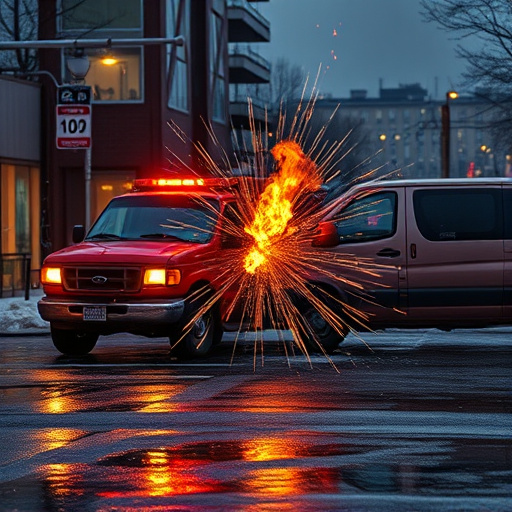
Restoring Tesla’s black paint job to its former glory involves a meticulous process that can be broken down into manageable steps. Begin by thoroughly inspecting the vehicle for areas affected by oxidation and fading, using a flashlight to detect hidden damage. Next, gather your tools: a high-quality auto polisher, specialized cutting compounds, microfiber cloths, and protective gear.
For optimal results, start with light sanding to remove any rough spots or old wax residue, being careful not to scratch the paint. Apply the cutting compound using the polisher, following the product’s instructions for speed and pressure. Work in small sections, allowing each area to dry slightly before moving on. After buffing out the compound, use a clean cloth to wipe down the surface, revealing a smoother, more even base. Finally, apply a fresh layer of carnauba wax or a modern sealant to protect the restored paint from future damage and restore its deep black shine.
Restoring your Tesla’s black paint job not only enhances its aesthetic appeal but also protects its surface from future oxidation and fading. By understanding the causes of these issues, gathering the right tools and materials, and following a systematic approach, you can achieve a like-new finish that will turn heads and prolong the life of your vehicle’s exterior. Embrace the process, take pride in your restored Tesla, and enjoy the sparkle of a truly exceptional black paint job.




